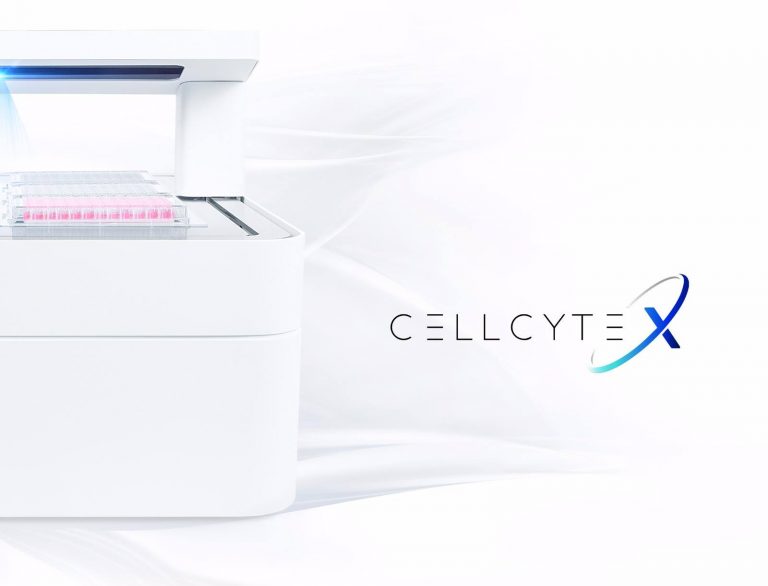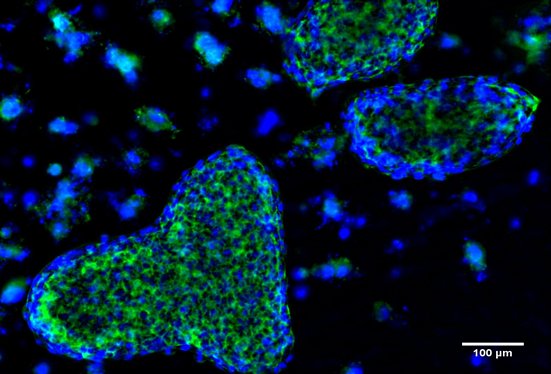
CELLINK, a Swedish 3D bioprinting developer, has recently launched its CELLCYTE X platform to allow researchers to better monitor bioprinted structures. This new system will mark the company’s entrance to the microscopy field, enabling scientists to observe growth and proliferation of 3D printed cells in their respective environments.
This CELLCYTE X system holds up to six plates that contain up to 96 sample wells filled with cells. The technology is capable of scanning one single plate in less than 5 minutes and tracking cell morphology at a rate of three frames per second. The device is equipped with a 5-megapixel camera, which is on par with most microscope cameras, and magnifies images 20 times. CELLINK currently has patents pending for several of the parts inside of the CELLCYTE X device, and the company plans to improve this system to allow for remote cell imaging.

The company claimed that, “launching the CELLCYTE X platform is another step toward CELLINK’s goal of enhancing biomedical research and changing the future of medicine.”
READ MORE: ActivArmor Providing 3D Printed Casts to the Jacksonville Jaguars
In a statement released on CELLINK’s site, CEO Erik Gatenholm noted that the human cell is on of the most essential components to bioprinting. He described the traditional process of creating cells before bioprinting as incubating the cells in a culture and constantly checking the cells under a microscope to ensure proper development. Gatenholm described this process to be detrimental to the cellular outcome, being that the cells must be removed from their climate-controlled environment to be observed under a microscope.

“We developed a product to monitor cells in their proper environment,” said Gatenholm. “CELLCYTE X is a revolutionary microscope that’s placed in the incubator to monitor the cells both before and after the bioprinting process, offering our customers an ideal cell-culture environment and process.”
The CELLCYTE X scope is described to combine power, size, and intuitive design to give each incubator an easy-to-use microscopy system. By removing the risk of disturbing the developing cells, this device allows for more accurate cell incubation. CELLCYTE also separates itself from the competition being that it utilizes cloud technology to continuously analyze results, maximizing the information scientists have regarding experiments.
This comes in the wake of CELLINK receiving roughly €965,775 in funding from the EU to pursue a collaborative project with the Academisch Centrum Tandheelkunde Amsterdam (ACTA). This funding went towards a project called the Functionalized Colagen-based Bioink for 3D Bioprinting project (FUNC). This FUNC project will be conducted over a three-year period with a total budget of €1,883,259. 50% of this funding was generated from Eurostars, which is a project between EUREKA and the European Commission.
READ MORE: 3D Printing Models of Patient’s Bone Fractures for Preoperative Reference
The main goal of this FUNC project is to create a biofunctionalized collagen ink that can be used with CELLINK’s bioprinters. The company claims that the FUNC BIOINK will give human cells an ideal environment to grow in, with inclusion of peptides that increase cell differentiation, spread, and adherence.
Check out this great article on our new Cellcyte X! https://t.co/CgpUo02241
“CELLINK preserves integrity of 3D bioprinted cells with new CELLCYTE X microscopy platform”
Thank you @3dpbm! #bioprinting #3dprinting #medicine #future #innovation
— CELLINK (@CELLINK3D) February 5, 2019
Sources: CELLINK, 3D Printing Industry, 3D Printing Media







 © 2025 Mashup Media, LLC, a Formedics Property. All Rights Reserved.
© 2025 Mashup Media, LLC, a Formedics Property. All Rights Reserved.